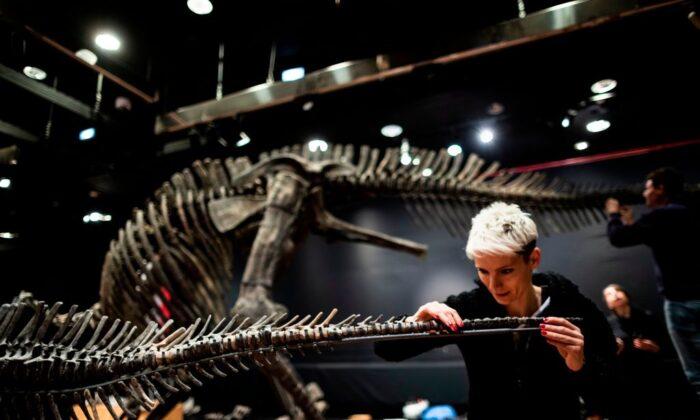Giant carnivorous dinosaurs the length of a bus wandered southeast Queensland about 160 million years ago, new research shows.
Analysis of fossilised footprints by a University of Queensland research team has shone new light on the diversity of dinosaur life in the state during the mid-to-late Jurassic period.
The team, led by palaeontologist Anthony Romilio, looked at prints discovered in the ceilings of underground coal mines near Ipswich and Toowoomba around 70 years ago.
“They contain a lot of big and very big tracks made by big and very big carnivorous dinosaurs,” Romilio told AAP on June 18.
Some of the biggest footprints are roughly 80 centimetres long.
They likely belonged to a carnivorous dinosaur approximately 10 metres long, with legs more than three metres high and a skull about 1.2m long.
“It’s almost equivalent to the T-Rex,” Romilio said of the dinosaur, which pre-dates its more famous ‘cousin’ by about 90 million years.
“(But) the meat-eaters tended to be a lot more slender build, and would have been more elongated and more graceful in appearance, rather than chunky like a T Rex.”
The collection of footprints, which were moved from the mines and housed in the Queensland Museum, also revealed the diversity of meat-eating dinosaurs that ruled the area in that period.
“From the research, there were some about emu size, there were some the size of a car, whereas the big one, you’re looking around the length of a bus,” Romilio said.
The researchers also found tracks that indicated some of the smaller carnivores could run at 35 kilometres per hour, which is 10 km/h faster than a human sprinting.
But, Romilio isn’t optimistic the bones of these giant Jurassic reptiles will be found any time soon.
“If you were to collect all the meat-eating dinosaur bones that we currently have (in Australia), you could fit them in one hand.”
“The limiting factor is that they’re likely in really old rocks, tens of hundreds of metres below ground.”





